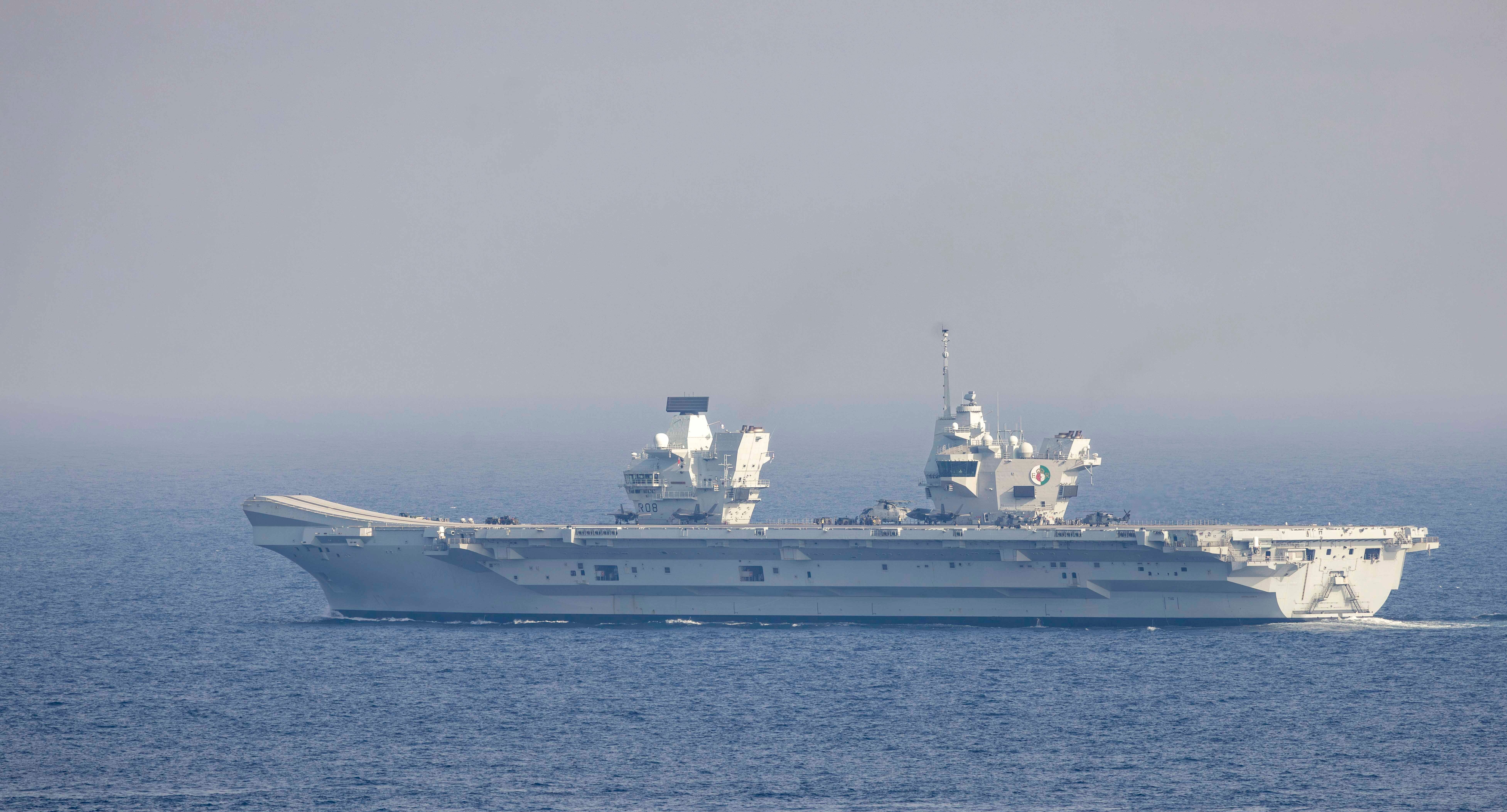
Royal Navy carrier HMS Queen Elizabeth (R08) was forced to cancel its deployment at the last minute because of a problem with its propeller shaft, with sister ship HMS Prince of Wales (R09) now being mobilized to replace it.
On Sunday, the Royal Navy posted a statement on the social media channel X from Fleet Commander Vice Adm. Andrew Burns.
“Routine pre-sailing checks yesterday identified an issue with a coupling on HMS Queen Elizabeth’s starboard propeller shaft. As such, the ship will not sail on Sunday. HMS Prince of Wales will take her place on NATO duties and will set sail for Exercise Steadfast Defender as soon as possible,” reads the statement.
In August 2022, as Prince of Wales prepared to head out for a deployment to the United States, the carrier had a breakdown caused by a malfunction to its starboard propeller shaft. According to a BBC report, a Ministry of Defence spokesperson stated Queen Elizabeth’s problem was not related to the Prince of Wales incident.
Queen Elizabeth was scheduled to take part in the annual U.K.-led multinational exercise Joint Warrior which runs from Feb.24 – Mar. 3, leading a multinational eight-ship carrier strike group (CSG) before moving on to participate in Exercise Nordic Response, the maritime portion of NATO exercise Steadfast Defender, which begins on Mar. 5. The Queen Elizabeth CSG was to have been comprised of Queen Elizabeth, frigate HMS Somerset (F82) and two Royal Fleet Auxiliary (RFA) Tide-class fleet oilers, with U.S., Spanish and Danish warships rounding things out. Prince of Wales will now replace its sister ship, though it will take time given the carrier has to be fuelled, take on equipment, ammunition and stores and bring forward maintenance tasks, as well as cross-transfer equipment from Queen Elizabeth.
Prince of Wales returned from a deployment to the U.S. East Coast in December last year and was expected to work its way back to operational status by later this year before embarking on an Indo-Pacific deployment in 2025.
France and Italy, however, are both preparing CSG deployments to the Indo-Pacific this year, while Germany and the Netherlands are planning warship deployments to there as well. France has not released any timeframe or details for the deployment of carrier FS Charles De Gaulle (R91) to the Indo-Pacific beyond that it will take place this year. The carrier is in the middle of working up its air group to operational certification.
Meanwhile, Italian Navy Chief Adm. Enrico Credendino during the Paris Naval Conference on Jan. 25 said Italian Navy aircraft carrier ITS Cavour (550) will lead a multinational CSG to the Indo-Pacific in February, with ships from other nations either integrated as part of the CSG or sailing in company during its voyage. The Italian Navy carried out staff talks with U.S. Navy Seventh Fleet from Jan. 11-12 in Rome, according to a Seventh Fleet release, “to discuss shared maritime security challenges and ways to advance interoperability between the two navies.” The release did not mention Cavour’s upcoming deployment, but it is likely the discussions included joint activities with the Cavour CSG and Seventh Fleet units during the planned deployment.
During the Paris Naval Conference, Vice. Adm Giacinto Sciandra, commander, Italian Maritime Force, stated in a panel discussion that one of the Italian escort ships in the Cavour CSG would temporarily detach to travel to Hawaii to participate in the U.S. Navy-led Rim of the Pacific (RIMPAC) multinational exercise, normally held around July.
Germany, meanwhile, will dispatch frigate FGS Baden-Württemberg (F222) and fleet oiler FGS Frankfurt am Main (A1412), with both ships also expected to take part in RIMPAC. Germany has not yet released the planned route and schedule for the deployment, but in an online interview on the German Armed Forces webpage, German Navy Chief Vice Adm. Jan Christian Kaack stated Indonesia, Malaysia and Singapore as countries that the two ships would call on.
On Jan. 31, Netherlands Minister of Defence Kajsa Ollongren announced on social media channel X that the nation will deploy frigate HNLMS Tromp (F803) to the Indo-Pacific, and that the Dutch government was considering having the frigate take part in Operation Prosperity Guardian or an EU mission aimed at protecting merchant shipping from Houthi attacks.
Ollogren also posted a link to a letter to the Netherlands House of Representatives Standing Committee on Defence that detailed the frigate’s planned deployment, with an early March departure and a mid-September return. “The voyage will take it via the Mediterranean Sea to the Indian Ocean, the North Pacific Ocean and the North Atlantic Ocean. As usual, the frigate will operate in accordance with international law, including the United Nations Convention on the Law of the Sea (UNCLOS),” stated the letter. The letter also stated Tromp will participate in RIMPAC during its deployment, and that joint activities and engagements with other countries during the voyage are still being coordinated. The frigate will make port calls as well, according to the letter.





